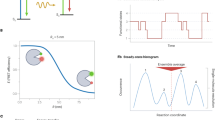
Overview
- Presents state of the art information on NMR spectroscopy, and its place in the broader field of biophysics
- No other monograph presents such a wide range of topics, including NMR spectroscopy, protein folding, X-ray crystallography, spectroscopy and applications
Part of the book series: NATO Science for Peace and Security Series B: Physics and Biophysics (NAPSB)
Access this book
Tax calculation will be finalised at checkout
Other ways to access
About this book
Similar content being viewed by others
Keywords
Table of contents (8 papers)
-
Front Matter
-
Back Matter
Editors and Affiliations
Bibliographic Information
Book Title: Biophysics and the Challenges of Emerging Threats
Editors: Joseph D. Puglisi
Series Title: NATO Science for Peace and Security Series B: Physics and Biophysics
DOI: https://doi.org/10.1007/978-90-481-2368-1
Publisher: Springer Dordrecht
eBook Packages: Physics and Astronomy, Physics and Astronomy (R0)
Copyright Information: Springer Science+Business Media B.V. 2009
Hardcover ISBN: 978-90-481-2366-7Published: 05 June 2009
Softcover ISBN: 978-90-481-2367-4Published: 05 June 2009
eBook ISBN: 978-90-481-2368-1Published: 25 May 2009
Series ISSN: 1874-6500
Series E-ISSN: 1874-6535
Edition Number: 1
Number of Pages: VII, 179
Topics: Life Sciences, general, Biological and Medical Physics, Biophysics, Biotechnology, Solid State Physics, Spectroscopy and Microscopy, Theoretical and Computational Chemistry



